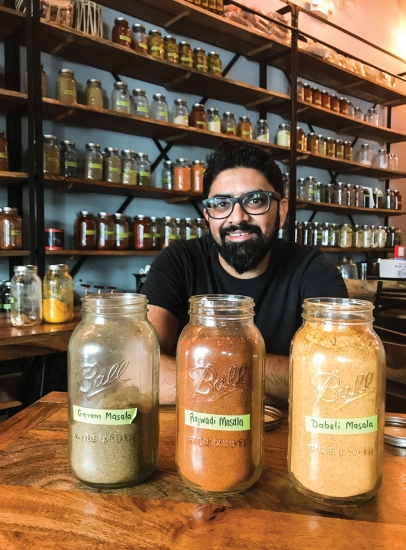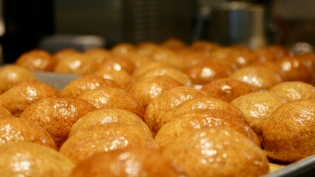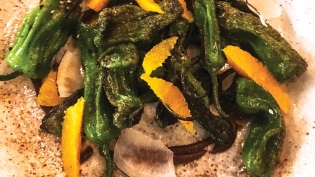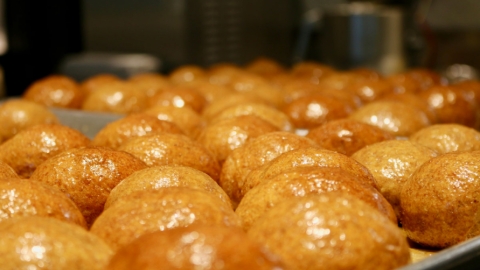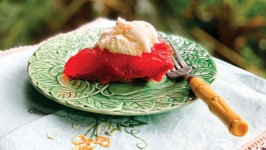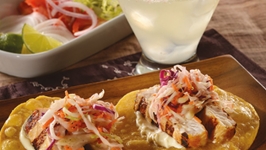Ghee Indian Kitchen: Masala Mania
No other restaurant in South Florida reveres its spices so visibly as Ghee, chef Niven Patel’s Gujarati-influenced farm-to-table restaurant at downtown Dadeland. One entire wall is devoted to neatly labeled jars of spices, blends and pickles, all called into action daily.
“This is our inspiration wall. This is where we start, what we’re going to match with vegetables or meat,” says Patel. While his Homestead Rancho Patel farm is supplying the restaurants with 200-300 pounds of produce a week in the early spring growing season, his spices are shipped in from India. “Right now, it’s peak spice season in India – 1,500 pounds of spices will be arriving here before the monsoon season.” The wall, refreshed weekly, includes a shelf dedicated to spices, herbs and dried flowers used in their sake- and wine-based cocktails (they don’t have a full liquor license).
The shelves of spices tell the story of Ghee’s cuisine. Most spice blends, Patel says, use the same 10 spices: clove, cinnamon, cardamom, cumin, coriander, black cardamom, mace, nutmeg, black pepper and bay leaf. The difference is in how they’re put together. He pulls out three jars of different masalas. Each has clove, cumin, coriander and cinnamon. The Dabeli masala has mace and is used in their paneer dish; the Rajwadi masala is used in their smoked lamb neck; and the garam masala – a blend unique to every cook – goes in their pakoras.
But it is how the spice blends are used that makes Indian cooking so distinctive. “We do what’s called the vagar, the most-used term in our kitchen. It’s how we start any dish. The really important part is the spice hitting the oil, infusing that, toasting it,” he says. “Spices should be there but not kick you in the face. They create depth of flavor, nuance.”
Pani puri, a street snack, is a crispy, hollow bite-sized puri filled with sprouted moong, beet bits and fresh green juice, and seasoned with pani puri masala made with amchur (tart dried green mango powder) and ground pomegranate seeds to add fruitiness and complexity. Lima beans with fresh heirloom tomatoes and citrusy curry leaf only uses one seasoning, the aromatic ajwain. Their cocktails make lavish use of dried flowers and fruits, like the Hibiscus Pink Peppercorn Spritz with cava and local honey. J Wakefield Brewery has created Paan wala beer for Ghee, using mango, betel leaf and lemon verbena from Rancho Patel.
Look for spicy surprises not listed on the menu, like the dark pinwheels that accompany the backyard pakoras, pictured below. These Gujarati specialties are made by covering taro leaves with a paste made from chickpea flour, sesame seeds, jaggery, lemongrass and garam masala, then rolling them up and slicing them into pinwheels, and frying them. Their sweet, nutty, fragrant crunchiness is unforgettable. “And those flavors,” says Patel. “They have to pop.” They do.
Ghee Indian Kitchen
Downtown Dadeland: Lunch and dinner Tues.-Sat.
Design District: Lunch and dinner Tues.-Sat.


